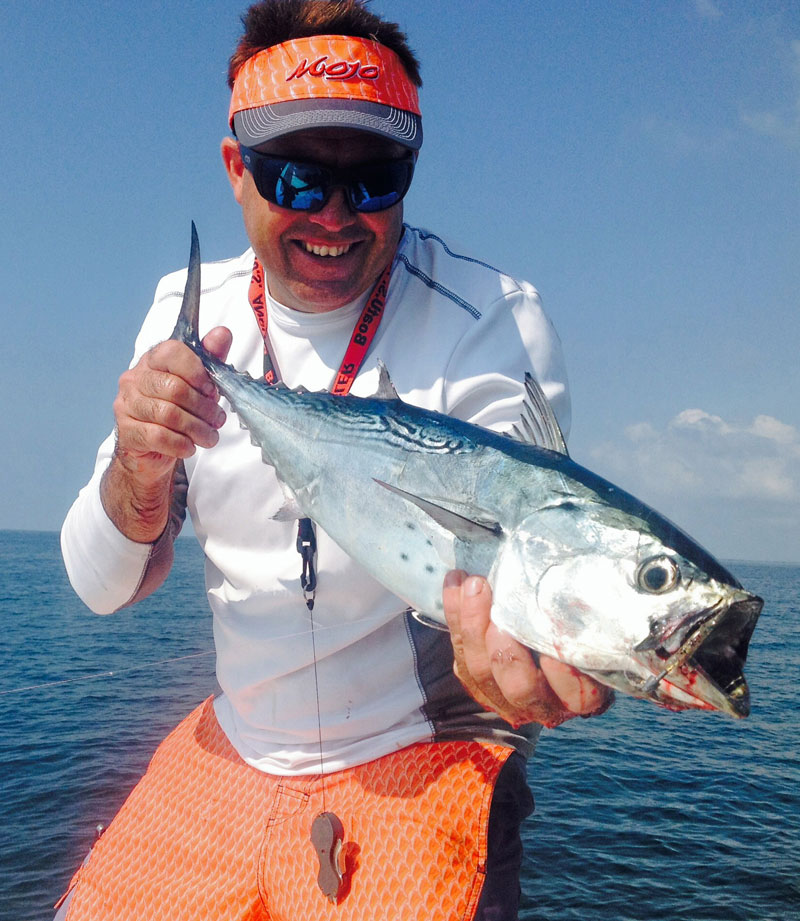
False albacore are hitting their stride
October is when false albacore numbers begin to hit their stride at the central North Carolina coast.
Although not a good seafood choice, albacore — aka albies, alberts, little tuny — exhibit strength and speed, gather in large schools and provide non-stop, nearshore action from late August through Christmas.
Guide Noah Lynk of Harkers Island lives and works near one of the coast’s top venues to find false albacore.
“I like the hook at Barden’s Inlet (near Cape Lookout),” he said. “They like warm water temperatures and peak from late October through Thanksgiving.”
Lynk and “Carolina All Out” host Chris Douglas filmed a recent false albacore trip offered on YouTube.
Extremely strong for their size, football-shaped albacore offer reel-screaming, light-tackle action, taking line at 40 mph.
Best ocean signs of albacore are gannets and terns diving on baitfish schools.
“They like to eat bay anchovies and glass minnows,” said Lynk, 51, who owns Noah’s Ark Fishing Charters (252-342-6911).
Small lures seal the deal
Lynk uses small lures to match the baitfish that albacore prefer.
“Anchovies are an inch long,” Lynk said. “They’re small and clear with an eyeball.”
Lynk uses 7 1/2-foot spinning rods and 3000 or 4000 series reels spooled with 12-pound FINS braid, casting 1/8- or 1/4-ounce jigheads with Salty Bay Baits Glass Minnows trailers or Sea Striker Jigfish. He likes 3-foot, 30-pound fluorocarbon leaders.
Spanish mackerel from 2 to 6 pounds also will attack albacore lures in October.
“They may be in the same areas, but they don’t mix,” he said. “Albacores might work one school of baitfish, and Spanish will be on another.”
Spanish will suspend beneath feeding albacores, so Lynk fast-retrieves lures near the surface. If he lets them sink, mackerels may smack them.
Albacore weigh 6 to 10 pounds early in the season, but they may reach 20 pounds.
Anglers often mistake false albacore with striped or Atlantic bonito because of similar body shapes. But albacores are a tuna species, while bonitos are classified as mackerels.
Moreover, bonitos are in North Carolina waters only from mid-April through May, then they head north, while false albacore are present from early fall through mid winter.
Bonitos also have solid stripes below their dorsal fins, while false albacore have squiggly, worm-like shapes from under their dorsals to their lateral lines. Both have blue-black backs with silver sides.
“They both look like torpedoes,” Lynk said.
Bonitos are great table fare while albacore do not make the grade as an edible fish.




Be the first to comment